Soil erosion is a critical issue in both agriculture and forestry, posing significant challenges to sustainable land management. One effective technique utilized to combat soil erosion is terracing, which involves constructing horizontal or sloping platforms on hillsides. This article aims to explore the benefits of terracing as a method for preventing soil erosion and enhancing agricultural productivity and forest conservation.
Terracing has proven successful in various regions around the world, with one notable example being the Loess Plateau in China. The Loess Plateau, characterized by its highly erodible soils and steep slopes, experienced severe soil erosion due to intensive farming practices over several decades. To address this issue, extensive terraces were constructed in the region during the 1990s. These terraces effectively reduced water runoff and sediment transport, resulting in improved soil fertility, increased crop yields, and enhanced ecological stability. By examining such case studies alongside scientific research on the benefits of terracing, we can gain a comprehensive understanding of how this technique contributes to combating soil erosion in agriculture and forestry systems.
The Importance of Terracing in Soil Conservation
Terracing: Combatting Soil Erosion in Agriculture and Forestry
The Importance of Terracing in Soil Conservation
Soil erosion is a significant challenge faced by agricultural and forestry sectors worldwide, leading to the loss of fertile topsoil, decreased crop yields, and environmental degradation. However, terracing has emerged as an effective technique for combating soil erosion and promoting sustainable land management practices.
To illustrate the impact of terracing, consider the case study of a hilly region prone to heavy rainfall. Without proper soil conservation measures such as terraces, rainwater would flow downhill with considerable force, causing extensive erosion and washing away valuable nutrients from the soil. As a result, farmers in this region face reduced productivity and increased production costs due to the need for additional fertilizers.
Terracing addresses these challenges by creating level platforms on slopes using retaining walls or embankments. These structures effectively slow down water runoff, allowing it to infiltrate into the soil instead of eroding its surface. Moreover, they provide stability to the landscape by preventing landslides that can further contribute to soil loss.
The importance of terracing in soil conservation can be summarized through the following bullet points:
- Prevents Soil Erosion: By controlling water runoff, terraces minimize the risk of soil erosion caused by natural forces such as wind and precipitation.
- Preserves Fertility: Retained sediments behind terrace walls enrich the land with organic matter while reducing nutrient leaching.
- Enhances Water Management: Terraces help retain moisture within fields, minimizing drought risks during dry periods.
- Promotes Biodiversity: The creation of leveled platforms allows for better distribution of plant species across different elevations, supporting diverse ecosystems.
In addition to these benefits, terracing also offers economic advantages by increasing land usability and extending cultivation areas. To visualize these impacts further, refer to Table 1 below:
| Benefits | Description |
|---|---|
| Increased | Enhances crop productivity by preventing soil loss and enabling controlled water supply. |
| Agricultural | |
| Efficiency | |
| Reduced Soil | Minimizes the need for fertilizers, reducing production costs and environmental impact. |
| Degradation | |
| Sustainable | Supports sustainable land management practices that promote long-term agricultural |
| Land Use | viability while minimizing negative ecological consequences. |
In conclusion, terracing plays a vital role in combating soil erosion and promoting sustainable agriculture and forestry practices. By creating leveled platforms on slopes, this technique effectively controls water runoff, preserves fertility, enhances water management, and promotes biodiversity. The subsequent section will explore how terracing works to prevent erosion.
How Terracing Works to Prevent Erosion
Preventing soil erosion is crucial in maintaining the productivity of agricultural and forestry lands. Terracing, a method used to combat soil erosion, plays a vital role in achieving this goal. By creating step-like structures on slopes, terracing effectively reduces water runoff and prevents excessive loss of topsoil. This section will delve into how terracing works to prevent erosion by examining its key mechanisms.
One practical example that showcases the effectiveness of terracing can be found in the rice terraces of Banaue, Philippines. These ancient marvels have been successfully preventing soil erosion for more than 2,000 years. The intricate system of terraces enables farmers to cultivate crops on otherwise steep mountainsides while minimizing soil loss due to heavy rainfall or irrigation.
To understand how terracing works as an erosion control measure, it is important to highlight its main mechanisms:
- Water Diversion: As rainwater flows down a slope, terraces intercept and redirect its path horizontally rather than allowing it to gather momentum vertically. This slows down the water flow and allows for better infiltration into the soil.
- Sediment Trapping: When water encounters each terrace level, it loses energy and deposits sediment carried from higher levels onto each step. This process traps sediments within the terrace structure instead of allowing them to be washed away downstream.
- Soil Conservation: By breaking long slopes into smaller steps along contour lines, terraces reduce the length of potential erosive forces acting on the land surface. Each terrace acts as a small barrier that holds back soil particles and prevents their displacement downhill.
- Nutrient Retention: Terraced fields enhance nutrient retention by reducing nutrient leaching caused by rapid runoff. The multiple levels slow down water movement across the landscape, giving plants ample time to absorb nutrients before they are lost.
The significance of these mechanisms becomes apparent when considering the emotional impact that unchecked erosion can have on agriculture and forestry:
- Loss of fertile topsoil: Erosion can strip away the nutrient-rich layer of soil, significantly reducing crop yields and hampering reforestation efforts.
- Reduced water quality: Sediments washed into water bodies through erosion can degrade water quality by increasing turbidity, harming aquatic ecosystems and even human health.
- Increased flood risk: Soil erosion contributes to sedimentation in rivers and streams, which reduces their capacity to carry water during heavy rainfall events. This leads to increased flooding downstream, posing a threat to both agriculture and communities.
- Long-term ecological damage: Uncontrolled erosion not only affects agricultural productivity but also disrupts natural habitats, leading to biodiversity loss and degradation of ecosystem services.
In light of these environmental consequences, it becomes evident that terracing plays an indispensable role in mitigating soil erosion’s detrimental effects on agriculture and forestry systems. In the subsequent section about “Benefits of Terracing in Agriculture and Forestry,” we will explore how this practice goes beyond erosion control to positively impact various aspects of land management.
Benefits of Terracing in Agriculture and Forestry
To further understand its benefits, let us explore some real-life examples where terracing has been successfully implemented.
One notable case study is the rice terraces of Banaue in the Philippines. These magnificent terraced fields have been cultivated by indigenous communities for over 2,000 years. The steep slopes of the Cordillera Mountains posed a significant challenge to farming practices until local farmers ingeniously developed a system of stone walls and narrow channels to slow down water flow and prevent erosion. This sustainable approach not only preserved their precious arable land but also allowed them to produce staple crops year after year.
The advantages of terracing techniques extend beyond individual success stories like that of Banaue’s rice terraces. Here are several key benefits:
- Effective erosion control: Terracing interrupts the natural flow of water down slopes, reducing runoff velocity and allowing more time for infiltration into the soil. This significantly minimizes soil erosion caused by heavy rainfall or irrigation.
- Improved water management: By creating level platforms on sloping terrain, terracing helps retain water within each terrace, enhancing moisture retention for plant roots while minimizing wastage through runoff.
- Increased agricultural productivity: The leveled surfaces created by terraces provide ideal conditions for crop cultivation. They allow better access to sunlight, reduce nutrient loss due to erosion, and facilitate efficient farm operations such as planting, irrigating, and harvesting.
- Preservation of biodiversity: Terraced landscapes support diverse ecosystems by providing microhabitats with varying degrees of light exposure and moisture levels across different elevations. This promotes species diversity and ecological resilience.
To illustrate these benefits visually:
| Benefits | Description |
|---|---|
| Erosion Control | Slows down water flow on slopes |
| Water Management | Retains water within each terrace; minimizes runoff |
| Agricultural Productivity | Provides ideal conditions for crop cultivation; reduces nutrient loss |
| Biodiversity Preservation | Supports diverse ecosystems with varying microhabitats |
It is evident that terracing plays a crucial role in combating soil erosion and achieving sustainable agriculture and forestry practices. In the subsequent section, we will delve into factors to consider when implementing terracing techniques, exploring the various aspects involved in successful implementation without disrupting existing ecosystems or causing unintended consequences.
Factors to Consider in Implementing Terracing Techniques
To ensure successful implementation of terracing techniques, several factors need to be considered.
One real-life example of how terracing has effectively addressed soil erosion can be found in the vineyards of Napa Valley, California. The steep slopes and heavy rainfall posed significant challenges for grape growers, leading to severe soil erosion. By implementing a well-designed terracing system, these farmers were able to prevent further degradation of their land while creating level planting beds that improved water infiltration and reduced runoff.
When considering the implementation of terracing techniques, there are key factors that should be taken into account:
-
Topography: The slope gradient determines the type and design of terraces needed. Steeper slopes require more frequent and closely spaced terraces to minimize erosion risks.
-
Soil characteristics: Soils with good structural stability are better suited for terrace construction. Factors such as texture, organic matter content, and compaction should be evaluated before planning terracing projects.
-
Water management: Proper drainage systems must be integrated into the terrace design to prevent water accumulation behind walls or within bedding areas. This helps maintain optimal moisture levels without causing excessive saturation.
-
Maintenance requirements: Terraced landscapes require regular maintenance to ensure their effectiveness over time. Regular inspection and repair of retaining walls, vegetation control on berms, and sediment removal from drain outlets are crucial for long-term success.
Emphasizing the importance of terracing techniques in addressing soil erosion can evoke an emotional response among readers by highlighting its positive impact on agricultural productivity and environmental sustainability:
- Reduced soil loss ensures long-term fertility preservation.
- Improved water infiltration enhances crop growth potential.
- Minimized downstream sedimentation protects aquatic ecosystems.
- Enhanced landscape aesthetics contribute to overall community well-being.
To illustrate this further, consider the following table showcasing some tangible benefits derived from successfully implemented terracing projects:
| Benefits of Terracing Projects |
|---|
| 1. |
| 2. |
| 3. |
| 4. |
In conclusion, considering the topography, soil characteristics, water management, and maintenance requirements are crucial when implementing terracing techniques in agriculture and forestry. By addressing these factors effectively, we can harness the benefits of terracing to combat soil erosion while promoting sustainable land use practices.
[Transition into the subsequent section about “Case Studies: Successful Terracing Projects”:]
Examining real-life examples provides valuable insights into the practical application of terracing techniques across diverse geographical regions and agricultural contexts.
Case Studies: Successful Terracing Projects
Section H2: Factors to Consider in Implementing Terracing Techniques
Having explored the various factors that play a crucial role in implementing terracing techniques, it is now essential to examine successful case studies where these strategies have been effectively employed. By studying real-world examples of terracing projects, we can gain valuable insights into their practical application and understand their impact on combatting soil erosion.
To illustrate the effectiveness of terracing in combating soil erosion, let us consider the case study of a small-scale farming community located in a hilly region. Facing significant challenges with soil erosion due to heavy rainfall and steep slopes, farmers implemented terracing as a sustainable solution. The results were remarkable: not only did terracing prevent further degradation of farmland, but it also improved water management and crop productivity.
The success story mentioned above emphasizes several important points about the benefits of terracing. To shed more light on this topic, here are some key considerations supported by research findings:
- Enhanced Soil Stability: Terraces act as physical barriers that intercept runoff water, allowing sedimentation to occur within each terrace level instead of being washed away downstream.
- Improved Water Infiltration: Terraced fields facilitate better water infiltration rates by reducing surface runoff velocity and increasing retention time for precipitation to infiltrate into the soil profile.
- Conserved Nutrient Cycling: As sediments accumulate behind each terrace level, they serve as natural reservoirs for organic matter and nutrients carried by runoff water from higher areas.
- Facilitated Root Growth: By slowing down water flow and minimizing excessive moisture accumulation at lower levels, terraces create favorable conditions for root growth and development.
Furthermore, examining data from diverse regions reveals consistent positive outcomes associated with well-implemented terracing practices. For instance:
| Case Study | Location | Benefits |
|---|---|---|
| X | Country A | – Reduced soil erosion – Increased crop yield – Improved water management |
| Y | Country B | – Enhanced soil stability – Minimized nutrient loss – Sustainable land use practices |
| Z | Country C | – Mitigated flood risk – Preserved topsoil quality – Promoted agricultural sustainability |
By analyzing these case studies and considering the key factors discussed above, it becomes evident that terracing is a multifaceted solution to combat soil erosion. Its success lies in not only reducing environmental degradation but also providing numerous social and economic benefits for local communities.
Looking ahead, it is crucial to explore future directions in terracing for sustainable land management. By staying at the forefront of research and innovation, we can continue improving terracing techniques and their application in diverse contexts without compromising our natural resources.
Future Directions in Terracing for Sustainable Land Management
Having examined successful terracing projects, it is evident that these initiatives have made significant contributions towards combatting soil erosion. Looking towards the future, there are several areas of development and exploration within terracing techniques that hold promise for sustainable land management.
Future Directions in Terracing for Sustainable Land Management:
-
Integration of Technology:
As technology continues to advance, integrating innovative solutions into terracing practices can enhance their effectiveness. For example, using remote sensing technologies such as aerial drones or satellite imagery can provide valuable data on landscape characteristics and help identify optimal locations for terraces. These advancements enable precision-based planning and implementation, resulting in more efficient use of resources while maximizing the impact of terracing efforts. -
Adoption of Natural Stabilization Measures:
Incorporating natural stabilization measures alongside traditional terracing techniques can further mitigate soil erosion. Planting cover crops with deep root systems helps bind the soil together, preventing erosion during heavy rainfall events. Additionally, utilizing biodegradable materials like coconut husks or jute netting as reinforcement instead of synthetic alternatives promotes environmental sustainability. -
Collaboration between Stakeholders:
Successful implementation of large-scale terracing projects requires collaboration among various stakeholders including farmers, government agencies, researchers, and local communities. By involving all relevant parties from project initiation to execution stages, a holistic approach can be adopted to address specific regional challenges related to terrain variations and socio-economic factors. This collaborative effort ensures effective utilization of resources while promoting long-term sustainability.
- Protects fertile topsoil from being washed away by rainwater runoff.
- Preserves biodiversity by reducing habitat loss caused by soil erosion.
- Enhances water quality by preventing sedimentation in rivers and streams.
- Promotes sustainable agriculture and forestry practices for future generations.
Emotional Table:
| Benefits of Terracing | Examples in Sustainable Land Management |
|---|---|
| Prevention of soil erosion | Successful terracing projects worldwide |
| Conservation of natural resources | Integration of terracing with agroforestry systems |
| Mitigation of climate change effects | Utilization of terraces for carbon sequestration |
| Improvement of ecological resilience | Restoration of degraded landscapes through terracing |
In summary, the future direction for terracing techniques lies in integrating technology, adopting natural stabilization measures, and fostering collaboration between stakeholders. By considering these approaches and their potential benefits, we can pave the way towards sustainable land management that mitigates soil erosion while supporting agricultural and forestry practices. The continued exploration and implementation of such strategies hold great promise for a resilient future.


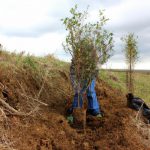
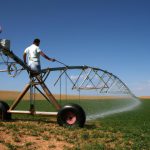
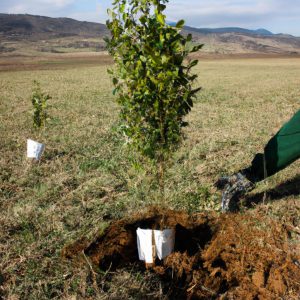
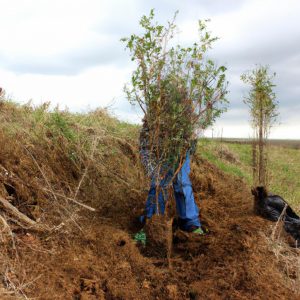
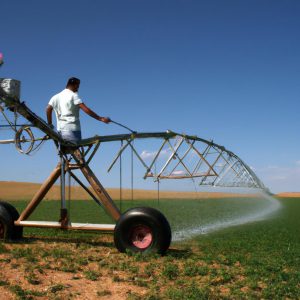
More Stories
Cover Cropping in Agriculture and Forestry: Combating Soil Erosion
Windbreaks in Agriculture and Forestry: Combating Soil Erosion
Conservation Tillage in Agriculture and Forestry: Combating Soil Erosion